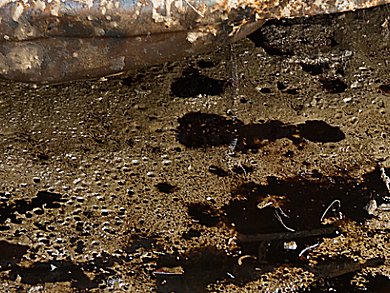Samuel Arey, École Polytechnique Fédérale de Lausanne (EPFL), Switzerland, and colleagues from the Woods Hole Oceanographic Institute, USA, took samples at the Deepwater Horizon rig with the help of a remotely operated vehicle (ROV) which were analyzed and the dissolution of hydrocarbons was modeled. The model showes how the properties of hydrocarbons are important in understanding the wellhead structure and pollution diffusion—how pollution spreads out—in the depths.
For the first time the physical basis for the deep sea trajectories of light-weight, water-soluble hydrocarbons such as methane, benzene, and naphthalene released from the base of the rig are described.
They observed, e.g., that at a little more than 1,000 m below the surface, a large plume spread out from the original gusher, moving horizontally in a southwest direction with prevailing currents (see picture).
 |
Unlike a surface spill, from which these volatile compounds evaporate into the atmosphere, in the deep water under pressure, light hydrocarbon components predominantly dissolve or form hydrates. Depending on its properties, the resulting complex mixture can rise, sink, or even remain suspended in the water, and possibly go on to cause damage to seafloor life far from the original spill. |
|
© EPFL Ecole Polytechnique Fédérale de Lausanne |
- Composition and fate of gas and oil released to the water column during the Deepwater Horizon oil spill,
C. M. Reddy, J. S. Arey, J. S. Seewald, S. P. Sylva, K. L. Lemkau, R. K. Nelson, C. A. Carmichael, C. P. McIntyre, J. Fenwick, G. T. Ventura, B. A. S. van Mooy, R. Camilli,
Proc. Nat. Acad. Sci. 2011, in press.
DOI: 10.1073/pnas.1101242108




